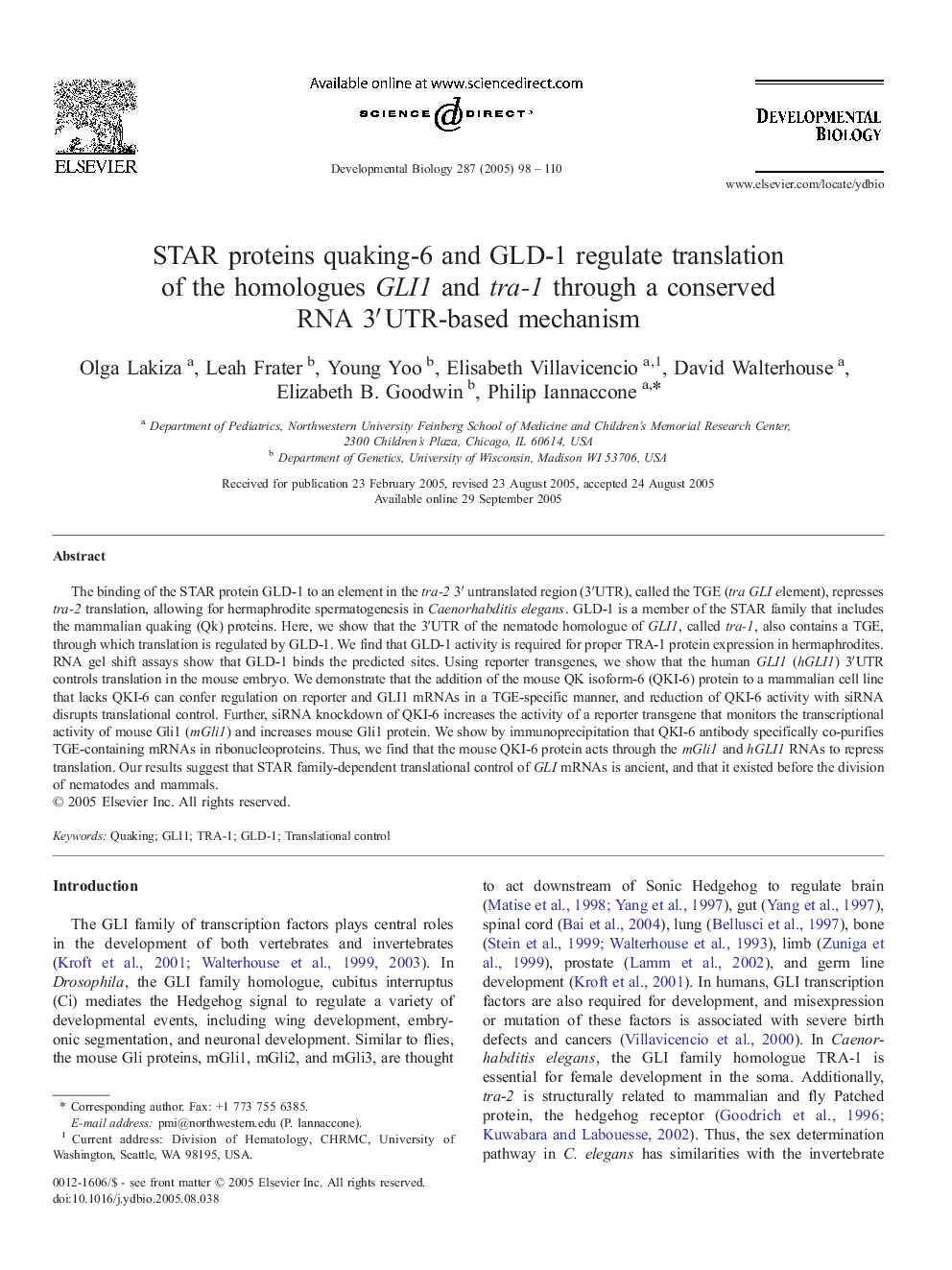| Article ID | Journal | Published Year | Pages | File Type |
|---|---|---|---|---|
| 10933857 | Developmental Biology | 2005 | 13 Pages |
Abstract
The binding of the STAR protein GLD-1 to an element in the tra-2 3â² untranslated region (3â²UTR), called the TGE (tra GLI element), represses tra-2 translation, allowing for hermaphrodite spermatogenesis in Caenorhabditis elegans. GLD-1 is a member of the STAR family that includes the mammalian quaking (Qk) proteins. Here, we show that the 3â²UTR of the nematode homologue of GLI1, called tra-1, also contains a TGE, through which translation is regulated by GLD-1. We find that GLD-1 activity is required for proper TRA-1 protein expression in hermaphrodites. RNA gel shift assays show that GLD-1 binds the predicted sites. Using reporter transgenes, we show that the human GLI1 (hGLI1) 3â²UTR controls translation in the mouse embryo. We demonstrate that the addition of the mouse QK isoform-6 (QKI-6) protein to a mammalian cell line that lacks QKI-6 can confer regulation on reporter and GLI1 mRNAs in a TGE-specific manner, and reduction of QKI-6 activity with siRNA disrupts translational control. Further, siRNA knockdown of QKI-6 increases the activity of a reporter transgene that monitors the transcriptional activity of mouse Gli1 (mGli1) and increases mouse Gli1 protein. We show by immunoprecipitation that QKI-6 antibody specifically co-purifies TGE-containing mRNAs in ribonucleoproteins. Thus, we find that the mouse QKI-6 protein acts through the mGli1 and hGLI1 RNAs to repress translation. Our results suggest that STAR family-dependent translational control of GLI mRNAs is ancient, and that it existed before the division of nematodes and mammals.
Keywords
Related Topics
Life Sciences
Biochemistry, Genetics and Molecular Biology
Cell Biology
Authors
Olga Lakiza, Leah Frater, Young Yoo, Elisabeth Villavicencio, David Walterhouse, Elizabeth B. Goodwin, Philip Iannaccone,
